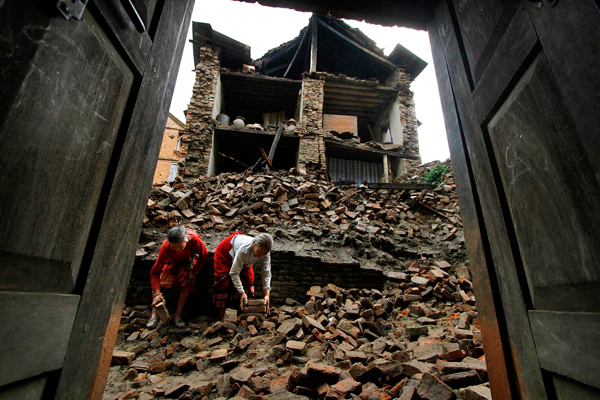No Lessons Learnt, When Will The Authorities Wake Up?
Devastating earthquake that shook Nepal

NEW DELHI: Tremors from the devastating earthquake that hit Nepal on Saturday,were also felt in Guwahati, Kokrajhar, Bongaigaon and Majuli in Assam where several buildings developed cracks. An earthquake measuring 7.6 on Richter scale jolted the Northeast on Sunday as well but fortunately, no damage was reported.
Another earthquake, measuring 6.9 on the Richter scale, hit the Northeast soon after, around 12.39 pm. According to the Indian Meteorological Department (IMD), the epicentre of the earthquake was located inside Nepal and it was a shallow-depth quake occurring at a depth of 10 km below the surface of the Earth.
Luck remained on the N-E side with no report received from any part of the region of any damage to life or property.
The Assam State Disaster Management Authority said that many schools, hospitals and government buildings have neglected safety measures even after a joint survey by Assam Engineering College in July last year revealed structural vulnerability.
"Since Assam is located in the seismically active Zone V, we had surveyed 600 schools and 40 hospitals, mostly in Guwahati, and identified those having structural and non-structural vulnerability. Following the survey, we had issued notices and requested them to take up safety measures, including retrofitting solution for buildings with structural problem. But very few have taken measures suggested by civil engineers. We have seen the devastation in Nepal and must take measures necessary to reduce the impact in case of a disaster here," Chief Executive Officer of the authority, P.K. Tiwari, said.
In fact, many earthquakes measuring over three on Richter scale has hit the State since February. But despite this, not any concrete action has been taken yet.
"The survey found some hospitals blocking their balconies with an almirah or other furniture. How will the rescue personnel reach them in case a disaster strikes? Stocks of blood and medicine bottles are kept in the almirah and in case of a quake these items will get damaged. The emergency support equipment in the ICUs are kept without any strong protection, so if they stop functioning during a quake, imagine what will happen to the critically ill patients," Tiwari added.
Tiwari, who is also the Commissioner and Secretary of the State Revenue and Disaster Management department further said "We had served many deadlines to the schools and hospitals and will carry out another inspection and issue notices to make sure they take necessary measures. We are repeatedly spreading the message of vulnerability but people must also understand and take necessary safety measures. Retrofitting solution is costly and time consuming but they can at least go for other non-structural safety measures”.
The survey report released last year in August divulged some shocking statistics.
Around 34% of schools in Guwahati have major structural vulnerability, 10% located on the hills are vulnerable to slope failure/landslide, 5% are vulnerable to floods while as many as 74% schools have non-structural vulnerability.
"Twenty schools and five hospitals in other parts of the state surveyed were found with structural vulnerability to earthquake. Even many deputy commissioner offices in the districts were found having structural problems and lacking disaster management facilities," he said.
Even the government departments are not prepared with any disaster management plans, which is in fact mandatory under Section 14 of the Disaster Management Act, 2005. "This issue was raised in the state executive committee meeting recently and each department was asked to make their disaster management plan within July this year," Tiwari added.



